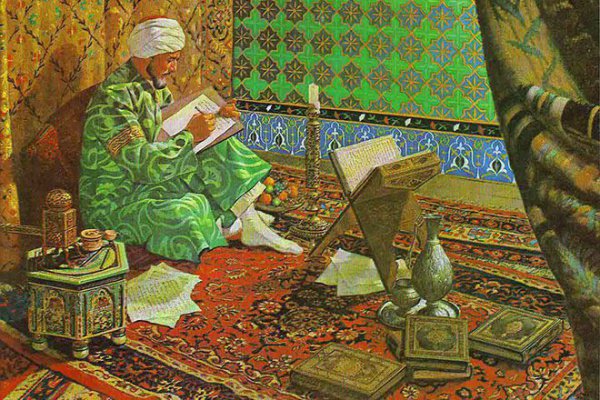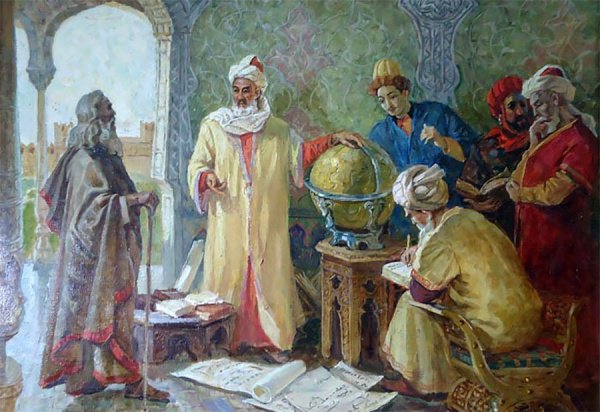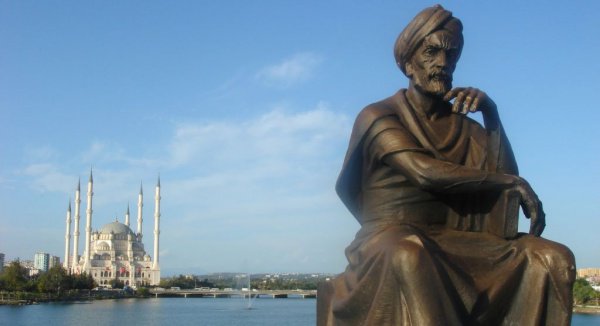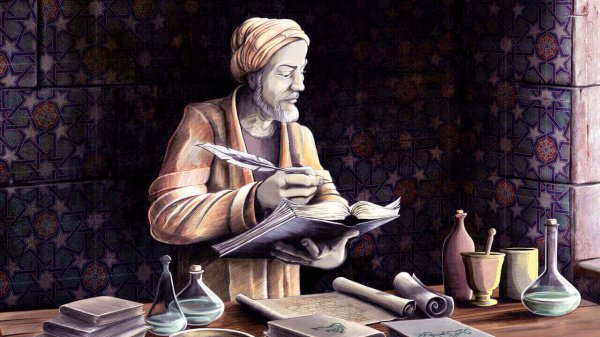Have you ever wondered where the term “medicine”, which has become a part of daily life, came from? There is an opinion among scientists and researchers that the emergence of this word is connected with the name of Ibn Sina (he is also called Avicenna), a great Eastern sage, physician, scientist – “madad Sina”.
Unfortunate misunderstanding
If we refer to history of Spain, we will find out that after Eastern Renaissance many Western scientists rewrote, rethought the works of Eastern thinkers. If there had been no Renaissance in the East, there would have been no European one. But despite this, in the rather popular series of “The 100 Prominent Scientists of the World” there is not a single word about the biography and about the great contribution of Muslim scientists into the establishment of the world science. It became a reason to create the film about Ibn Sina - Avicenna.

Perhaps, there is not such a person in the world who has never heard about Avicenna, who does not follow his philosophy and use his discoveries and achievements in everyday life. Ibn Sina (Abu Ali Husein Ibn Abdallah Sina) is one of the people who left a bright mark on human history. He is famous as a doctor, philosopher, mathematician, musician, poet, prominent scientist who made the invaluable contribution in 29 spheres of science.
The exact amount of his works is unknown, but researchers are hesitating between numbers 160 and 450. His books were burned, pulled out, hidden, passed to each other under pain of death, but even their simple enumeration sounds impressive: “The Book of Healing”, “The Book of Salvation”, “Remarks and Admonitions”, “The Book of Knowledge”. Impressive, isn’t it?
That is why it is even more surprising and unclear, why there is not a word about such a prominent scientist of the East in the popular and regularly broadcast cycle of short films “The 100 Prominent Scientists of the World”. Shukhrat Mahmudov, the director, decided to correct this mistake by shooting the film “Light from the East” based on the script of his wife, Razika Mergenbaeva.
Ibn Sina on the screen
The most important part of the film is the acquaintance of the world-famous scientist-encyclopedist Ibn Sina with the great thinker Abu Rayhan Biruni. The film shooting took place in the territory of several countries – Uzbekistan, Iran, France and Russia and the main role of the oriental thinker were played by young talented actors Hasan and Husan Salikhov.
The film is biographical and educational. The first shots of the film are symbolic – we can see young Ibn Sina who is going upstairs. But then the picture changes and we can see the racket that is ready to take off…

Sacred Bukhara is a citadel of science and theology. The word “Bukhara” itself means the place of knowledge. Not only Bukhara but also some other cities were centres of science, culture and architecture. Exactly in the territory of Khwarazm the book “The Avesta” was created. It is a unique spiritual monument of the world culture. Early Middle Ages in Central Asia were the times of upsurge and heyday of the incredibly powerful intellectual civilization, which gave an impetus to the transformation of the world.
“Eastern Renaissance” was the name of that unique phenomenon. It was the time of great geniuses. They were the encyclopedist Abu Nasr Al-Farabi – “Aristotle of the East”; the mathematician Muhammad al-Khwarizmi – the founder of algebra; the astronomer and geographer Ahmad Farghani that was one of the first people who proved that the Earth had the form of a ball; respected scientists-theologians Imam Al-Bukhari, Imam Tirmidhi and a number of other famous names…
“They say that the West is a body and the East is a spirit. But there was the human who united the whole world. The most universal head of the epoch was Abu Ali Ibn Sina…”
There is an ancient belief: when a genius is born people hear not the crying but the laughter of a baby and all the birds around sing” – it is how the narration about a difficult but very productive life of one of the greatest scientists of the East who divided the world science, including medicine, into “before” and “after Avicenna” begins.
Ibn Sina was born in 980 in the family of a rich person in the small village near Bukhara, Afshana (it is the territory of Central Asia). At that time it was the capital of the Samanid state. When the family moved to the capital, the boy who was gifted from his infancy, got access to deep knowledge, because at that time Bukhara was the educational centre, where various philosophers, doctors and poets came to in order to visit the richest palace library.
Even in early childhood Avicenna differed from peers in his incredible curiosity. He surprised adults with constant questions, very often showing his teachers a much deeper view of life than they expected from that young man.
As soon as the talented boy was 10, he knew the Quran by heart. People who surrounded Ibn Sina were impressed by the teenager’s success. And then father made up his mind to take his son from school in order to pay more attention to his individual education. A teacher (a visiting old man) began to come to their house to teach him Physics, Astronomy, Philosophy, Geography and other necessary subjects.
After a while, the pupil reached his teacher’s level of knowledge and he made a decision to start independent study to find answers on the questions he was curious about. When he was 14 the smart beyond his age boy got interested in medicine. He began to study all the treatises that were available in the city and then he even visited the most complicated patients in order to understand the truth of science deeper. A famous doctor and an author of the main medical textbook of those times, Abu Sahl Masihi, caused his interest in medicine.

Once an unusual case took place in the palace: the head of the state got ill but none of the court doctors could not choose the right treatment for him. And then young Avicenna was invited to the emir. He gave proper recommendations and successfully revealed the type of disease. After that Ibn Sina became the personal doctor of the ruler. His new occupation opened to him the access to books of the palace library, for which people came there from around the world.
Already by the age of 18 the literate young man had debated with outstanding scientists of the East and Central Asia by correspondence. And when he was 20 he wrote such books as “The Extensive Encyclopedia”, ethics publications and a medical dictionary.
However, the war began – Bukhara was conquered by the Turkic tribes, who destroyed and burnt the capital almost to the ground. Simultaneously they ruined the rich library. Ibn Sina’s father died and the boy made up his mind to leave the homeland. He did not know that he would never be able to set foot on the native land of Bukhara again. From that moment all his further life would be full of intrigues, envy of the genius of that time and of all the East and constant wanderings around the world.
Intellectual environment of Hamadan
In Khwarazm the young doctor made many friends and soon there came his former mentors Masihi and Biruni. The local ruler of the city promoted the development of different sciences and therefore he allowed gathering in the palace for productive communication.
In those years the state prohibited to dissect human bodies for studying their structure. Violators of the law were sentenced to death penalty, but Avicenna and Masihi could not be stopped by that law from thirst for knowledge and their desire to improve the existing level of medicine in order to be able to help people. And some time later the scientists were invited to the sultan.
It was known that such invitations threatened scientists and poets with only one thing – death. Remembering that fact Ibn Sina and his companion decided to escape. Without having calculated the amount of necessary water and food in haste and in addition having got into a hurricane in the desert, Avicenna lost Masihi. The scientist had years of wanderings ahead, his attempts to hide from the formidable sultan, changes of names in attempt to hide his identity in order to survive. But it was not the obstacle for his scientific activity.
In 1016 Ibn Sina stayed in Hamadan (the former capital of Media). At that time poorly educated emirs ruled there that was the advantage for Avicenna. He quickly received the post of chief physician of the local ruler and he even was given the title of chief minister-vizier.
The years of living in Hamadan made it possible for the scientist to finish the first volume of his main work – the book “Canon of Medicine”, which has been studied in medical institutions till now. This book impresses its readers by the discoveries made.
In a relatively short period of time “Canon” turned into the encyclopedia of the world importance that was also used in the territory of Ancient Rus. Even if the scientist had not written anything else except “Canon”, he would have provided himself with immortality with the help of that work. There are 5 000 pages in a modern edition, about 2 000 diseases. Detailed kinds of treatment follow after the description of symptoms.
Ibn Sina’s discoveries
He suggested treating not a disease but a patient and told about the third state of the body – between health and illness (that means chronic fatigue). At first Ibn Sina determined the constitution of a human, his or her psychotype and lifestyle. Based on that information he tried to balance the body as the holistic system.
This fundamental work consists of five volumes:
Volume 1 – medical science (the description of acute chronic diseases, their diagnostics, treatment, surgery).
Volume 2 – stories about simple cure of natural origin.
Volume 3 and 4 – recommendations for the treatment of human organ diseases and fractures of the body.
Volume 5 – the description of properties of complex medicine self-prepared by Avicenna as well as with reference to ancient doctors of Europe and Asia.

Up until now in Europe all medics have been taught according to Ibn Sina’s “Canon”. This work has become one of the most studied in the history of the mankind.
During his research and scientific studies Ibn Sina found out that viruses caused infectious diseases. That hypothesis will be confirmed only in 800 years by the Frenchman Louis Pasteur.
It is necessary to highlight the philosopher’s knowledge of pulse. He described all the possible types and states of it in the book. Avicenna became one of the first doctors who gave the definition to such complex diseases as plague, jaundice, cholera. It was he who explained the structure of a human eye in details.
Avicenna did not oppose the theory that God was the beginning of all the beginnings and the root cause of all that existed on the Planet. Having established the eternity of the world, he analyzed in details the essence of human’s soul, which appeared in various forms and bodies (like an animal or a human) in the world and then it returned to its Creator again.
Avicenna preferred to speculate about serious topics with the help of poems. In that form he wrote such works as “A Treatise on Love”,”Hayy ibn Yaqdhan”, “The Bird” and many others.
Ibn Sina made an invaluable contribution into Psychology: he developed his own doctrine in matters of human temperament (the division into hot, cold, wet and dry characters). It is necessary to note his works in Mechanics (the theory of the enclosed power), in music (works according to the theory of Vocal Art).
The number of all the works of the philosopher in various resources is different. Some historians claim that he created about 453 books of different scientific directions. In the Arabic literature there is about a dozen works of the philosopher (Astronomy, Chemistry, Alchemy and so on) in the preserved incomplete handwritten form. Today they are located in libraries around the world. As far as his poems are concerned, he glorified women’s beauty, love, harmony, perfection.
Avicenna lived the interesting life full of ups and downs. To his deepest regret, the Muslim scientist did not manage to return to the homeland after long wanderings because he died in a foreign land in 1037. He was under 57. The outstanding scientist was buried in Hamadan and 8 months later after the ceremony his body was moved to Isfahan for burial in the mausoleum.
Feeling the approach of death, Ibn Sina turned his eyes and pleas to God: “Who else will be able to relieve the sufferings? Who else can I beg? My soul will accept forgiveness and will be together with you forever. Streams of tears like pearl thread will flow down on my chest from my eyelashes...”
“We die and take only one thing away with us – the knowledge of the fact that we have learnt nothing…”
Ilmira Gafiyatullina
